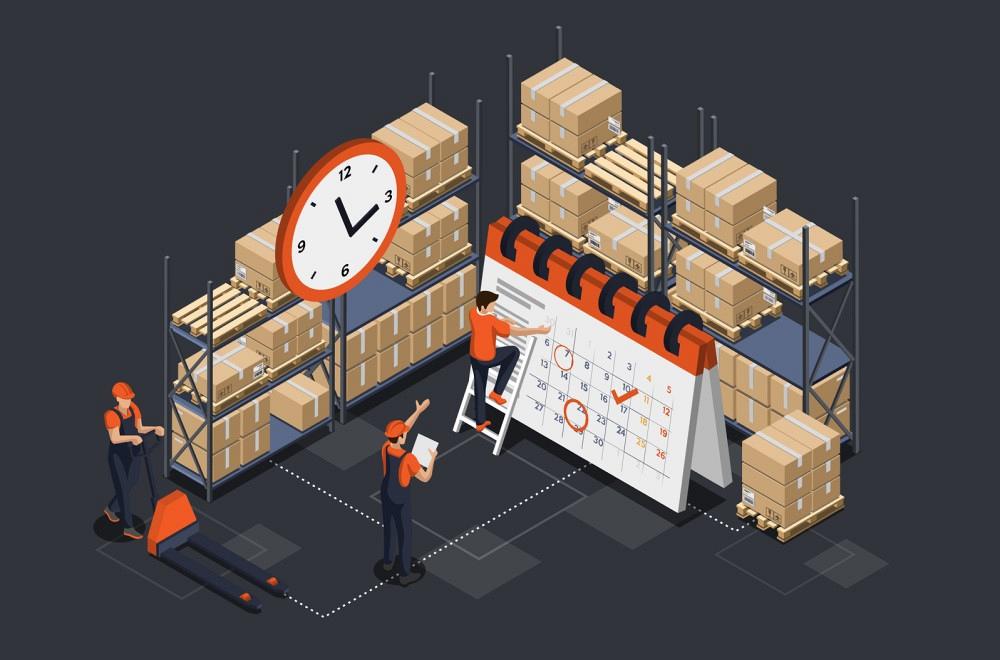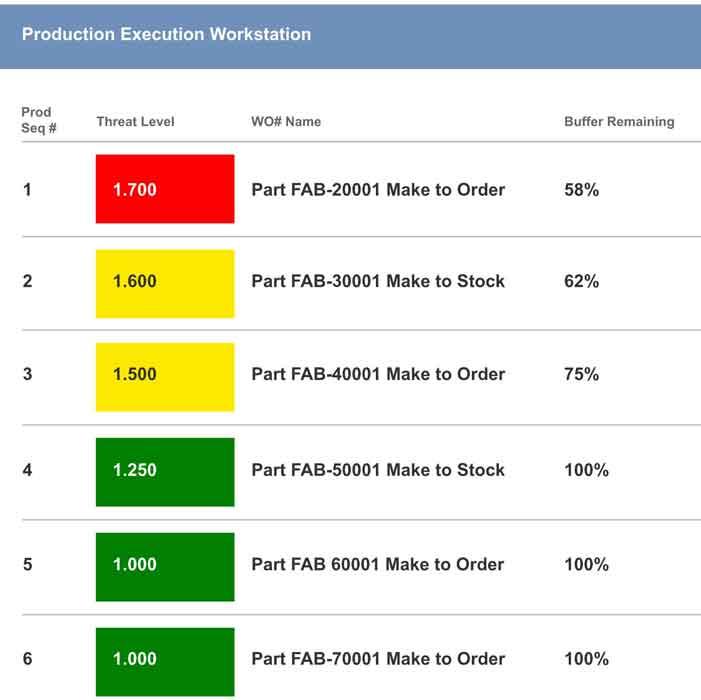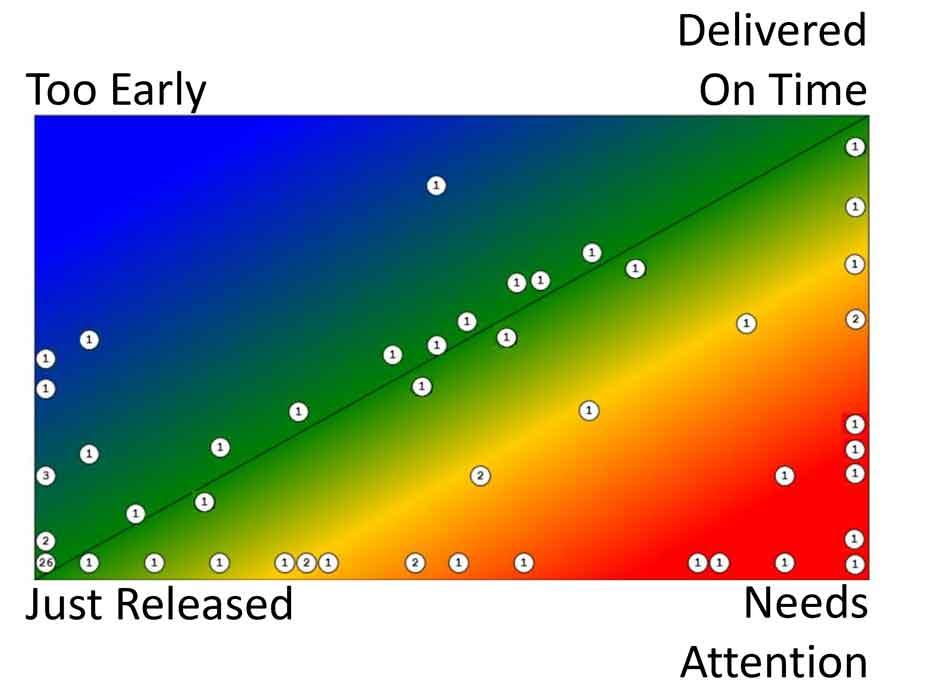President/CEO
- FMA
- The Fabricator
- FABTECH
- Canadian Metalworking
Categories
- Additive Manufacturing
- Aluminum Welding
- Arc Welding
- Assembly and Joining
- Automation and Robotics
- Bending and Forming
- Consumables
- Cutting and Weld Prep
- Electric Vehicles
- En Español
- Finishing
- Hydroforming
- Laser Cutting
- Laser Welding
- Machining
- Manufacturing Software
- Materials Handling
- Metals/Materials
- Oxyfuel Cutting
- Plasma Cutting
- Power Tools
- Punching and Other Holemaking
- Roll Forming
- Safety
- Sawing
- Shearing
- Shop Management
- Testing and Measuring
- Tube and Pipe Fabrication
- Tube and Pipe Production
- Waterjet Cutting
Industry Directory
Webcasts
Podcasts
FAB 40
Advertise
Subscribe
Account Login
Search
How high-product-mix manufacturers deliver on time
The key to delivery efficiency: stop scheduling and start prioritizing
- By Mark Lilly
- October 12, 2020
- Article
- Shop Management

Production planning in high-product-mix manufacturing must acknowledge and anticipate variability, control work-in-process, and prioritize the right work. Getty Images
Most North American manufacturers make custom products, not standard widgets, and their high-product-mix production environments are extraordinarily complex. A shop might manage hundreds, perhaps thousands of jobs at any one time.
Each job has at least several operations, and some might be sent for outside processing like heat treating or plating. Some might be subassemblies, with parts (“children”) being fabricated and then assembled to a “parent” subassembly, which in turn is assembled to another parent, and so on.
The children might be for a single job or shared across many parents that need them at different times. Managing these dependencies is no small task, and most companies have at least one person, sometimes a few, whose sole job is to manage the due dates and dependencies of all these subassemblies so their respective parents have a chance to be delivered on time. While juggling all this information, planners try their best to figure out, among all tasks across all work centers and departments, what truly is most important.
Meanwhile, sales and customer service continually and frantically ask production where orders are and how they’re progressing. Will an order be delivered on time? If not, when will it be finished, and when will it arrive at the customer’s receiving dock?
Many operations use finite scheduling methods developed in the 1970s and ’80s. Whether used separately or as part of enterprise resource planning (ERP) software, finite scheduling uses capacity-loading algorithms to schedule the operations of jobs in a forward or backward direction.
Both forward and backward scheduling have their challenges. For instance, forward-scheduling releases work too soon, flooding the floor with too many jobs, causing excess work-in-process (WIP), bottlenecks, and confusion about what to work on next. The problem with backward scheduling, on the other hand, is that you’re telling the planning tool, “OK, let’s plan to finish the last operation of every job … the day it’s due.” Anyone who’s spent time in a production environment knows that, to put it politely, “stuff happens.” Tooling and machines break down, key employees don’t show up, and material gets lost. In this environment, planning to complete the last operation of every job the day it’s due is a recipe for disaster. It’s no surprise then that, rather than relying on software algorithms, many end up scheduling manually on whiteboards or spreadsheets.
An Alternative Approach
Have you heard this one? “How do you make God laugh? Tell him your plans!” This couldn’t be more true than on a manufacturing shop floor. Change is constant, which is why the traditional approach to production scheduling—set all your data and parameters, run a program, which creates a plan (the “schedule”), and then attempt to execute that plan in the shop—is fraught with frustration. As soon as the program comes up with a plan, something changes that makes the plan obsolete.
Instead of creating a plan based on a capacity-loading program (forward, backward, finite, infinite scheduling), what if a shop adopted a method that focuses on a real-time priority list that, if followed, would speed the flow of work through the shop? George Plossl, one of the “fathers of MRP” back in the 1960s and 1970s, felt so strongly about improving flow that he made it the foundation of his first law of manufacturing: “All benefits [in a manufacturing company] will be directly related to the speed of flow of information and materials.”
What does “all benefits” mean, exactly? It means better on-time delivery, shorter lead times (leading to more sales and a better reputation in the market), less WIP (and less money tied up in inventory), and faster turns on the speed of production (greater throughput) and inventory. To achieve these benefits, an operation can apply three principles in conjunction with one another.
Principle No. 1: Acknowledge and Anticipate Variability
Say you’re using finite-capacity backward scheduling, which means that the last operation of every work order is scheduled to finish the day the job is due. That’s just asking for trouble. Hoping each operation gets done in perfect sequence is just a bad idea. Again, stuff happens. An operation might have a contention between manufacturing steps or experience tool or machine breakdowns. Perhaps the material doesn’t show up when promised. Shops need to acknowledge variability, even anticipate it. Each job needs some time protection to buffer the due date, and assigning the right time buffer protects your due date commitment.

Figure 1 A priority list at each workstation shows operators what to work on next. Orders in red are in the most danger of being late.
Principle No. 2 Manage WIP Volume
In many high-product-mix operations, no one really knows the right time to start a job. Without knowing this, and often with the intent of trying to keep everyone busy, planners release orders to production as soon as possible. This leads to several significant problems.
First, it increases inventory. Because planners don’t know when a job must start, they fear starting jobs too late, so material is purchased and brought in early—sometimes way too early—unnecessarily tying up capital and restricting cash flow.
Of course, releasing orders as soon as possible seems intuitive. After all, the sooner a work order is released on the shop floor, the sooner a finished order will come out the other side, right? Well … no.
Google “Little’s law,” and you’ll see the mathematics from a concept called queue theory. Little’s law states that the more items (people, cars, work orders) enter a system—anything from a highway, a grocery store, an amusement park, or a manufacturing shop floor—the longer those items will be in the system.
Say you drive up the on-ramp to a four-lane highway and hit the brakes. It’s bumper-to-bumper as far as you can see. You now know you’re going to be on that stretch of highway for a long time. Similarly, say you want to ride five rides at an amusement park. To ride those rides will take you a lot longer during spring break (pre-COVID-19 ) than if you went the third week of September when everyone’s back in school.
The same holds true on a manufacturing shop floor. The more jobs you release to production, the longer any one of those jobs will be in production. The neat part about Little’s law is that the inverse holds true: The fewer jobs you send out to the floor, the faster they will flow through all the manufacturing steps.
Principle No. 3: Use the Right Priority
Prioritizing jobs via due date seems to make sense, but in a high-mix environment it’s not that simple. Just because a job has a longer lead time doesn’t mean it’s in less danger of being late. A job due in two months might be in greater danger of being late than other jobs due in a week, especially if the long-lead-time job involves complex routings, lengthy processing times, and multiple steps requiring outside processing. Prioritizing based on due date would have you working on the jobs due earlier, putting those complex jobs due later in even greater danger of being late.
If a due date isn’t effective for setting priorities, what is? This is where relative priority enters the equation. Relative priority focuses on what production is trying to maximize: on-time delivery. It’s about focusing on what’s most in danger of being late regardless of when it’s due.
Such a system works off a ticking clock “eating away” at a time buffer, with priorities recalculated based on employees clocking in and out of jobs as well as other task-completion reporting. When operators see the job priority list, they know that the job at the top is most in danger of being late. The job that can least afford to wait gets worked on next.
Putting These Principles to Work
Operators don’t need a schedule to know which task to work on next. They just need to know which job is most in danger of being late (see Figure 1). Similarly, planners need not constantly update an ever-changing “schedule,” but instead can focus on the lateness threat level of all the orders in the shop (see Figure 2).

Figure 2 Instead of focusing on what is “on schedule” and what isn’t, a planner can monitor which jobs are in danger of being late. The more jobs that are in the green, the better. Jobs in red need attention, while jobs in the blue were released too early, creating excess WIP.
How do planners develop such a priority list? Here’s where an alternative approach to software comes into play. It doesn’t rely on capacity-loading algorithms based on backward, forward, infinite, or finite scheduling, but instead uses simulation and predictive analytics.
The goal is to predict the start and finish time and date of every operation in every work order. The prediction is based primarily on each order’s danger of being late—that is, each order’s threat-level priority, calculated by dividing the work that remains by the remaining time buffer. The more consistent an operation becomes, the shorter that time buffer can be. But again, production planning in high-mix manufacturing must anticipate variability, so the time buffer will never go away completely.
All this is incorporated into a custom execution plan, as shown in Figure 3. The left edge of the plan shows the correct time to start a job—not too late, not too early—and serves as the “need date” for any raw materials and manufactured components.
The planning method simulates production employees selecting the top order from the priority list, then “walks it out” into the future based upon the availability of machines, people, and (if needed) material. This produces a Gantt chart that looks like a schedule, but it’s not. Again, operators don’t need a schedule. They just need a priority list that shows them what to work on next.
That priority list comes from a plan created through software analytics that incorporates threat-level priorities (that is, an order’s danger of being late), with the aim of delivering orders on time as often as possible. What does “as often as possible” look like? That’s where capacity planning comes into play based on the actual way employees execute orders in the shop.
Predictive analytics—which, drawing from historical data, gets better over time—show detailed or aggregate predicted wait times by operation, job, or work center. Such analytics allow a company to run alternative game plans and production scenarios. When could I promise this quote if it turns into an order? How much overall lateness will be reduced if I work overtime this Saturday in my bottleneck department?
Promises Kept
The varying threat levels reveal where and how severe the bottlenecks will be. Viewing this information, an account manager can determine when he can deliver a specific work order to his client. And he doesn’t just guess or rely on a shop’s standard four- to six-week lead time. He instead promises a delivery date that takes into consideration all the other jobs on the floor, now and in the future.
Put another way, that promised delivery date factors in the uncertainty of high-product-mix production. It acknowledges and anticipates the planned and “unplannable” variability that production personnel deal with every day.
Mark Lilly is president and CEO at LillyWorks.

Figure 3 This custom execution plan for an order accounts for the inevitable variability of high-product-mix production. If the “work remaining” time shrinks faster than the time buffer, the threat of being late remains low. The plan also establishes the work release date (on the left edge). Work released any sooner would create excessive WIP. According to Little’s law, the more WIP you have, the greater your lead time.
About the Author

subscribe now

The Fabricator is North America's leading magazine for the metal forming and fabricating industry. The magazine delivers the news, technical articles, and case histories that enable fabricators to do their jobs more efficiently. The Fabricator has served the industry since 1970.
start your free subscription- Stay connected from anywhere

Easily access valuable industry resources now with full access to the digital edition of The Fabricator.

Easily access valuable industry resources now with full access to the digital edition of The Welder.

Easily access valuable industry resources now with full access to the digital edition of The Tube and Pipe Journal.
- Podcasting
- Podcast:
- The Fabricator Podcast
- Published:
- 04/30/2024
- Running Time:
- 53:00
Seth Feldman of Iowa-based Wertzbaugher Services joins The Fabricator Podcast to offer his take as a Gen Zer...
- Trending Articles
JM Steel triples capacity for solar energy projects at Pennsylvania facility

Fabricating favorite childhood memories

How laser and TIG welding coexist in the modern job shop

Robotic welding sets up small-batch manufacturer for future growth

Ultra Tool and Manufacturing adds 2D laser system

- Industry Events
Pipe and Tube Conference
- May 21 - 22, 2024
- Omaha, NE
World-Class Roll Forming Workshop
- June 5 - 6, 2024
- Louisville, KY
Advanced Laser Application Workshop
- June 25 - 27, 2024
- Novi, MI
Precision Press Brake Certificate Course
- July 31 - August 1, 2024
- Elgin,


























